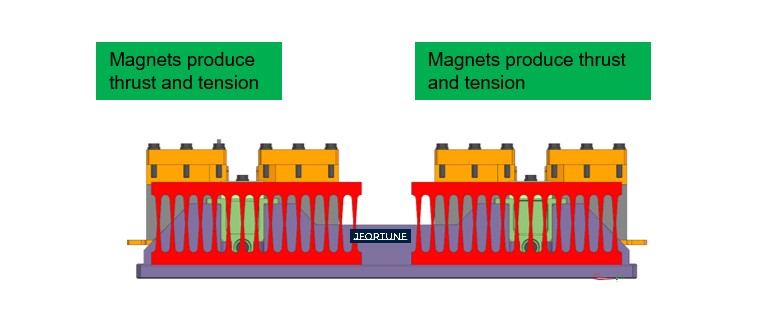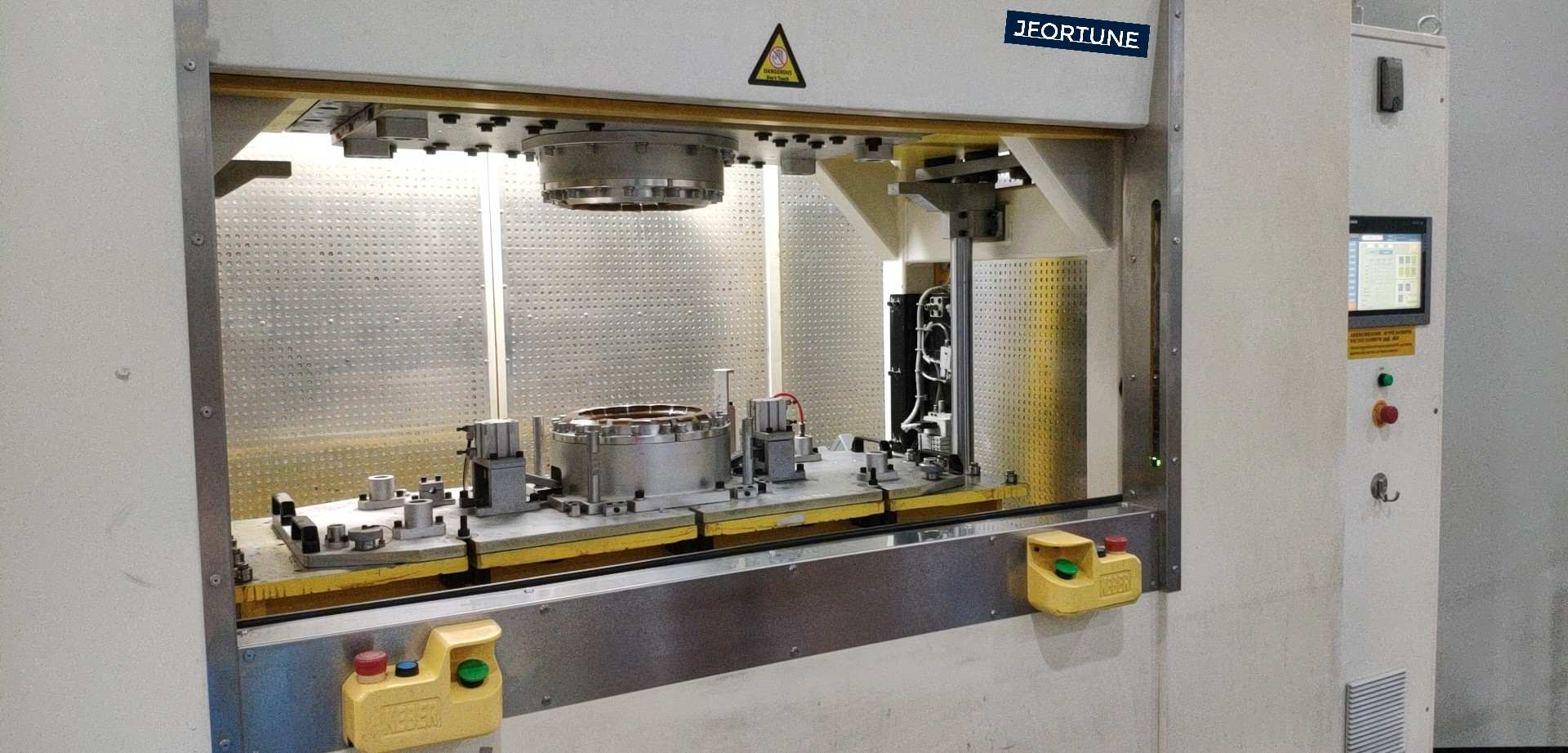There are many plastic welding technologies: Hot plate welding, infrared welding, ultrasonic welding, laser welding, hot gas welding, thermal radiation welding… Today I will introduce vibration welding. Vibration welding is a widely used technique for joining thermoplastic components. The working principle of a vibration welding machine involves the generation of alternating forces through the use of magnets driven by an alternating current. This dynamic process results in the deformation of a spring, leading to the oscillation or vibration of the welding tool.
Magnet-Driven Oscillation:
Magnet in the alternating current will produce thrust and suction on the upper tool drive plate (the left magnet produces suction force, the right magnet produces thrust, the current direction is changed, the left magnet produces thrust, right magnet produces suction)Under the suction and thrust, to make the spring deformation, when the spring deformation occurs, the active end will drive upper tool’s left and right movement (called the amplitude).
Spring-Driven Amplitude:
The deformation of the spring results in the displacement of its active end, which, in turn, drives the left and right movement of the upper welding tool. This movement is commonly referred to as the amplitude of vibration. The amplitude is a crucial parameter in vibration welding as it determines the extent of the oscillation and influences the efficiency of the welding process.
Amplifying Mechanical Motion:
As the upper tool moves back and forth due to the magnetic forces and spring deformation, it imparts mechanical motion to the components being welded. The friction and heat generated at the interface of the thermoplastic materials initiate the melting and bonding process. The continuous oscillation ensures a uniform distribution of heat and pressure, leading to a strong and reliable weld.
Controlling Welding Parameters:
Various factors contribute to the effectiveness of vibration welding machine, and controlling these parameters is essential for achieving optimal results. The frequency of the alternating current, the amplitude of vibration, and the duration of the welding cycle are carefully calibrated to suit the specific characteristics of the materials being joined.
Advantages of Vibration Welding:
The working principle of vibration welding offers several advantages. It is a fast and efficient process, suitable for large-scale production. The ability to control the welding parameters allows for the precise joining of intricate components. Additionally, vibration welding is well-suited for joining materials with different melting points and can produce welds with high strength and integrity.
In conclusion, the working principle of a vibration welding machine involves the intricate interplay of magnetic forces, spring deformation, and controlled oscillation. This dynamic process facilitates the efficient joining of thermoplastic components, making vibration welding a versatile and widely used technique in various industries.


